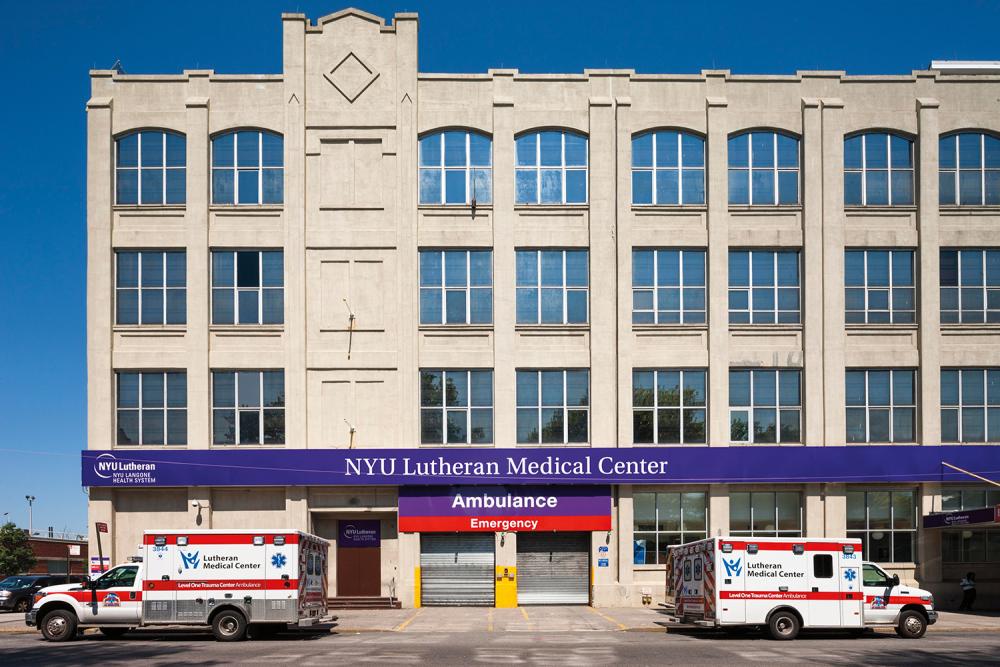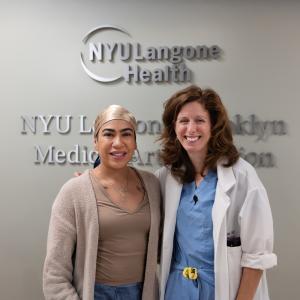Dr. Andrew Brotman, Chief Clinical Officer, On a Growth Strategy That Puts Patients First

Dr. Andrew W. Brotman, senior vice president and vice dean for clinical affairs and strategy.
Photo: Jonathan Kozowyk
As medical advances improve recovery times, and policy changes encourage shorter hospital stays, more and more patients now receive care in an ambulatory setting, away from a hospital. Anticipating this trend nearly a decade ago, NYU Langone Health adopted a bold new growth strategy to stay ahead of the curve. Today, its widespread network of some 140 ambulatory care sites serve neighborhoods throughout the New York metropolitan area, contributing largely to NYU Langone’s record total of more than 5 million patient visits in 2016.
“NYU Langone is really an ambulatory care network with some hospitals rather than the other way around,” explains Andrew W. Brotman, MD, senior vice president and vice dean for clinical affairs and strategy. As chief clinical officer, Dr. Brotman is responsible for program development, ambulatory care, faculty practice, and affiliations. Prior to joining NYU Langone in 1999, he was senior vice president and chief operating officer for physician practice management and network development for CareGroup in Boston. Dr. Brotman also served as chief of psychiatry at Beth Israel Deaconess Medical Center. Here, he shares his insights and perspectives on NYU Langone’s institutional strategy to meet the ongoing challenges of healthcare.
NYU Langone has changed a lot since you came here in 1999. How would you describe its transformation?
We’ve always had outstanding doctors. What’s different now is that we’ve moved from individual excellence to programmatic excellence. In other words, our doctors are now working within high-quality, multidisciplinary programs. So if you’re being treated for a serious condition, you’re not just going to Dr. So-and-So. You’re benefiting from the expertise of numerous specialists who work as a team. When I came here, there were virtually no programs with multiple specialists. Once we shifted from an individual model of care to a programmatic one, we were able to take on cases that are much more complex. What hasn’t changed, of course, is the basic doctor-patient relationship, which we hold as sacred.
Your province is large and diverse. How do all the pieces fit together?
My job is mostly to look outward—to meet the needs of our patients, keep pace with healthcare reform, and compete effectively. I read half a dozen newspapers every morning to find out what our competitors are doing, what hospitals in other states are doing—their needs and innovations. We now employ nearly 2,000 doctors, with an additional 700 or so in private practice who are aligned with us. We have ambulatory care sites throughout the five boroughs and Long Island, and some in Westchester.
How does NYU Langone ensure that new participants and practices measure up?
We try to recruit people who have a similar viewpoint, come from a compatible culture, and who are interested in a long-term commitment. We carefully evaluate their credentials, records, training, etc. Then there are the softer factors, like reputation. We practice due diligence and do the best we can.
What distinguishes our network of ambulatory care sites from that of other institutions?
Ours are primarily physician-driven, multidisciplinary group practices that combine primary and specialty care. They provide about 95 percent of the patient’s care and refer patients to a hospital or hospital-based program if the disease is complex or acute. We haven’t expanded our ambulatory network to fill beds. We don’t have that many beds. We’ve built these programs to deliver high-quality care to our patients in their own neighborhoods.
How have the evolving needs and expectations of patients shaped our overall strategy?
More than ever, patients expect and demand more access, better customer service, and higher-quality care. Two decades ago, if it took six months to get an appointment with a doctor and the patient had to wait an hour and a half to see him, many doctors thought that was terrific because it meant they were in demand. Today, that means that we’re not doing our job. One of our greatest assets is that we are truly patient centered. A perfect example is our electronic medical record system, Epic, which serves and empowers patients in so many practical ways.
How does NYU Langone Hospital—Brooklyn fit into our long-range plan?
Because NYU Langone Hospital—Brooklyn is a full asset merger, and not a strategic partnership, we’re under the same governance. This allows us to serve Brooklyn’s more than 2.5 million residents in closer proximity to where they live and work. About 90 percent of the care provided to our Brooklyn patients is within that borough, so only about 10 percent requires travel to our main campus for subspecialty care. Like most of our alliances, the goal is to bring excellent care closer to home.
A large part of strategic planning is adapting to trends, correct? How do we stay ahead of the curve?
By monitoring the Center for Medicare and Medicaid Services and other governmental agencies for things like changes in reimbursement policies. We developed an ambitious ambulatory strategy in response to a growing trend: from inpatient care to outpatient care. We anticipated that we were going to need a different payer framework, and that bet has come true. Increasingly, hospitals will provide high-end care for acute illnesses, while most other kinds of care will be offered in the ambulatory sphere.
Healthcare is undergoing so many changes so fast. Which reforms pose the biggest challenges for NYU Langone?
Broad initiatives like the Affordable Care Act and bundled care are the most sweeping in scope. But the development of new pharmaceuticals, medical devices, and other technology continually requires us to measure and assess projected costs versus desired outcomes.
Which healthcare reforms do you wish for the most?
I think we are always going to have to balance cost and care. But I wish that there were better policies established by the insurance companies, the pharmaceutical companies, and the federal government so that it isn’t left to practicing clinicians to explain to patients what the restrictions are on the cost side. Other countries have clear policies relating to cost versus availability of services, but in this country we have no integrated guidelines, so it’s left to those on the front line to try to adjudicate all this.
Inpatient stays are shorter, yet the acuity of illness is higher. What does that new equation mean for us?
It means that when a patient is discharged from our hospital, they’re not out of our care. They are in our care in another segment, and we’re responsible for them. If we have shorter lengths of stay that result in higher rates of readmission, then we’ll be penalized. The daily judgment calls are very difficult. Our philosophy is that hospitals are necessary when they’re necessary.
“Once we shifted from an individual model of care to a programmatic one, we were able to take on cases that are much more complex. What hasn't changed, of course, is the basic doctor-patient relationship, which we hold as sacred.”
As health insurers cover less, what does the future hold for patients?
Patients will need to be better informed than ever. With an ever-increasing amount of responsibility for their own coinsurance, copays, etc., patients need to be savvy consumers and careful decision makers. They must look for medical services and providers that give them real value for their contribution. Hopefully, they won’t just look for the lowest cost, but rather the most durable, long-term solution. The patient should be asking himself, “Given the fact that I’m responsible for a fair amount of this cost, is this the place I should go to? Is this the doctor I should see?”
We hear so much bad news about healthcare. Tell us some good news.
The survival rates for various forms of cancer have increased dramatically. Hepatitis C, which used to be fatal, is now essentially curable. Operations that once required 10-day hospital stays now enable the patient to go home after 10 hours—and with better results. These are remarkable advances.
Do you miss practicing psychiatry?
One of my mentors used to say that management is a subspecialty of psychiatry. There’s a lot of conflict resolution. You try to synthesize different points of view. Management is about removing boulders from people’s paths so that they can do their work. I use the skill sets of psychiatry every day.
You seem to enjoy making people laugh.
I do. It’s critically important. In my psychiatry training, I had supervisors who spent a lot of time focusing on how we needed to keep ourselves even-keeled in the midst of suffering. Part of that is humor, and patients actually appreciate it. It has to be appropriate, of course, but caregivers must maintain a sense of optimism because what they do is very serious business. There needs to be a counter-balance.
What’s the future of NYU Langone?
This year, U.S. News & World Report ranked us as one of the country’s top 10 hospitals and one of its top 15 medical schools. In both categories, we want to be in the top 5—and ultimately first.


